The observation and recording of natural phenomena have a long history in China and yet the kind of modern climate research that serves contemporary Chinese policy is only a few decades old. Adopting a biographical approach, a valuable tool in history and sociology, this paper will look at three scientists, Zhu Kezhen (竺可桢), Tu Changwang (凃长望), and Ye Duzheng (叶笃正). Each scientist represents various features in the historical evolution of Chinese scientific research on climate change. Which aspects of their careers and research focus in the 20th century reveal the evolution of climate change science in China? The story that emerges highlights, first, how perspectives shifted from a focus on the influence of climate conditions throughout Chinese history to a new understanding of China’s position in relation to global warming; second, how the mentorship of these eminent scholars helped create a new generation of Chinese climate scientists; and third, how the scientists’ links to international climate science evolved from learning overseas to active participation in global research networks.
The Imperial Context: Nature, Man, and the ‘‘Mandate of Heaven”
The Chinese imperial tradition emphasized an observation of natural disasters and weather events e.g., earthquakes, floods, and drought in China. During the imperial era (221 BCE to 1912 CE), recording and interpreting these phenomena were seen as important predictions for rulers, and both dynastic histories and local gazetteers traditionally contained detailed records of major natural events.
The producers and consumers of climate data in imperial China thus operated within a context that revolved around the ‘‘Mandate of Heaven” (天命), which placed natural disasters in a political and religious perspective. This mandate inspired ethical guidelines that equated disasters such as earthquakes, flooding, or famine with bad behaviour by the ruler. Therefore, maintaining harmony in nature was the personal responsibility of the emperor. This traditional Chinese political philosophy anticipated the impact of human beings on the climate that we now recognize as the concept of the Anthropocene.
Zhu Kezhen: The Genesis of Chinese Climate Research
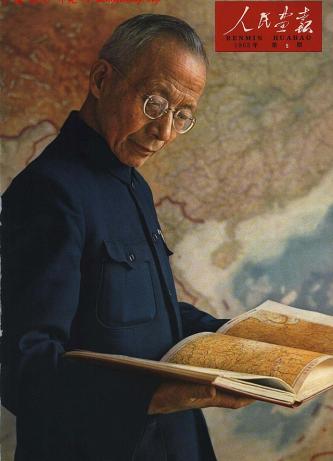
Figure 1: Portrait of Zhu Kezhen featured in Renmin Huabao (人民画报) no. 5 (1963). Source: https://commons.wikimedia.org/wiki/File:1963-05_1963%E5%B9%B4_%E7%AB%BA%E5%8F%AF%E6%A1%A2.jpg
Zhu Kezhen, also known as Co-Ching Chu, (1890–1974), one of the most prominent and pioneering meteorologists of twentieth century China, contributed greatly to meteorological studies in China by developing a system to use a wide variety of sources for a periodization of historical climate variability. In 1911, Zhu left China to study geography in the United States, and returned with a PhD in meteorology from Harvard University. His successful academic career is lauded today as being essential for the foundation of climate research in China. His role as director of the Institute of Meteorology at Academia Sinica enabled him to build a network of observation stations, train meteorologists, and publish extensively on weather and climate.
In 1949, Zhu Kezhen was appointed vice president of the Chinese Academy of Sciences and put in charge of geosciences and biosciences. He was considered one of the most prestigious scientists in the People’s Republic of China (PRC). For instance, Zhu and two other prominent Chinese scientists, missile expert Qian Xuesen and geologist Li Siguan, were repeatedly invited to speak to Mao Zedong at the Chrysanthemum Book House in the CCP headquarters Zhongnanhai (中南海) in 1964. According to one account, Mao took special interest in agriculture and had read a paper that Zhu published in 1964, where he reviewed the meteorological characteristics of temperature, rainfall, and solar radiation in China, and discussed possibilities for increasing food production. Thus, Zhu was provided with an opportunity to provide policy advice for the Chinese leadership regarding agricultural growth. Mao also expressed a wish to know more about China’s climate and encouraged Zhu Kezhen to prepare more detailed research on the subject.
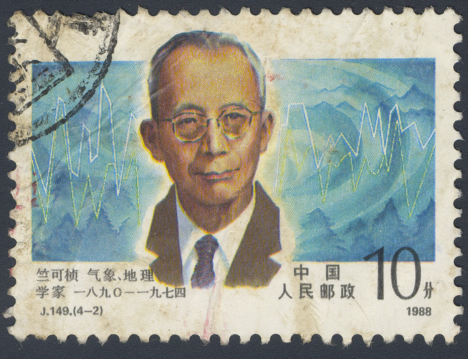
Figure 2: A stamp printed in China shows a portrait of Zhu Kezhen (1890-1974), Chinese metereologist and geologist, circa 1998. Shutterstock: 240859888.
Subsequently in 1972, Zhu used his collection of historical meteorological and phenological data for his article: “A Preliminary Study on Climate Change in China in the Past 5000 Years” (中国近五千年来气候变迁的初步研究). Here, Zhu traced the fluctuations of temperature in China over five millennia, emphasizing that cycles of warmer or cooler periods in China interacted with global climate trends caused by natural phenomena, which he substantiated with evidence based on the snowlines observed in Norway. He noted that the twentieth century represented a long-term warming trend and thus refuted a hypothesis of “a new ice age” that had become popular in international debates. In this sense, Zhu agreed with the majority of international scientists about the current belief in a warming, but at the time he argued that the main causes for climate change derived from cycles of solar radiation, and did not explicitly point to human greenhouse gas emissions.
Tu Changwang and the Recognition of Global Warming
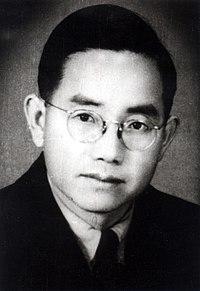
Figure 3: Tu Changwang Photo before 1962 in Keji Rensheng. Wikimedia Commons. Source: https://commons.wikimedia.org/wiki/File:%E6%B6%82%E9%95%BF%E6%9C%9B.jpg
Another scientist who shared this view of China’s climate as being related to global long-term cycles and a recent warming trend was Tu Changwang (1906–1962). Tu, at the request of Zhu Kezhen, returned to China from studying in the UK in the 1930s and became a leading figure in Chinese meteorological research. In a particularly noteworthy article in the People’s Daily in January 1961 entitled “On the issue of climate change in the twentieth century” (关于二十世纪气候变暖的问题), Tu underscored the fact that international meteorologists had calculated that the annual average temperature of the earth rose by 0.33 degrees between 1910 and 1940. He subsequently issued an early warning to the leadership about the risk of potential negative effects of continued climate change.
In many respects, Tu Changwang became one of the most influential scientists in the field through his mentoring of a group of meteorologists and atmospheric physicists that became a core of the climate science community in China in the late twentieth century. Both Tu Changwang and Zhu Kezhen pioneered the establishment of meteorological and weather forecasting scientific infrastructure in China. Nevertheless, in the 1950s and 1960s, China lacked access to the computational resources that were instrumental in the emerging approach of global climate modelling.
Ye Duzheng: Atmospheric Physics and Global Climate Science
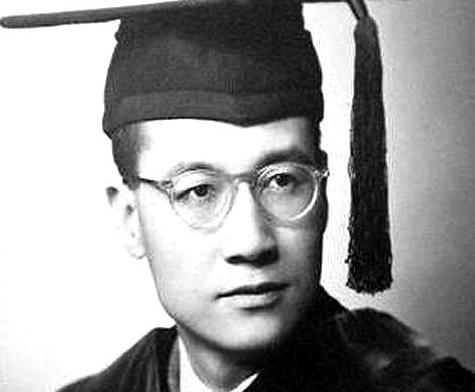
Figure 4: Ye Duzheng, photo circa 1940 in Guangming Daily. Source: https://commons.wikimedia.org/wiki/Category:Ye_Duzheng#/media/File:Ye_Duzheng1.jpg
The next generation of Chinese climate scientists developed the global modelling system in the 1990s. They emphasized the importance of understanding the global climate system and became intensely engaged in the international awakening to the prospects of future climate change. The foremost intellectual leader of this new generation was the atmospheric physicist Ye Duzheng (1916–2013), who graduated from Tsinghua University in 1940 and, in 1945, left to do his postgraduate studies in the US. He returned to China in 1950 after earning a PhD in atmospheric physics under the supervision of a leading climate scholar Carl-Gustaf Rossby at the University of Chicago in 1948.
In his research, Ye Duzheng developed the scientific foundation for the establishment of Qinghai-Tibet Plateau meteorology, identifying powerful jet streams in the northern hemisphere that directly affected the weather and climate of East Asia. In addition, his theoretical work on atmospheric long-wave energy dispersion and the adaptive scale theory of atmospheric motion contributed to the understanding of East Asian atmospheric circulation and weather forecasting. The publications based on this research earned Ye Duzheng an international reputation as a leading Chinese scientist in the field, and helped him establish academic links with international scholars during the 1970s and 1980s.
During the 1970s, prominent international climate scientists increasingly turned their attention to long-term climate change and the role of the climate system—encompassing the interlinked components of the atmosphere, the oceans, the cryosphere, and land. Ye Duzheng became deeply involved in this new field of research and international cooperation. From 1982–88, Ye was a member of the Joint Scientific Committee of the World Climate Research Programme (launched in 1979) and participated in the 1985 Villach Conference on Climate Change. After the conference, he proposed the establishment of China’s National Committee on Climate Research to leading government officials in charge of science and technology, and then became chair of this committee from 1985 to 1999. A recognition of his international work was provided in 2003, when Ye Duzheng was rewarded for his contributions to meteorological research with the 48th International Meteorological Organization Award. At the national level, he received the 2005 National Highest Science and Technology Award.
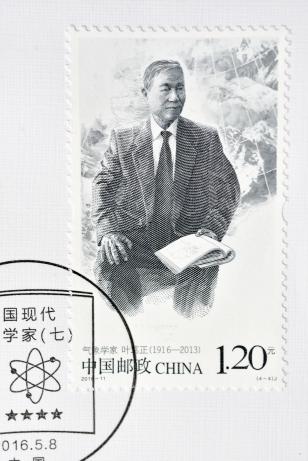
Figure 5: A stamp printed in China shows Ye Duzheng, Scientists of Modern China VII Stamp. circa 2016. Shutterstock: 581743210
As a pioneer in the study of climate systems, Ye Duzheng was also well aware of the growing impact of societies and people on the natural environment. Recognizing the vital nature of sustainability, he and his colleagues advanced the concept of “orderly human activities” (有序人类活动), which emphasized the importance of scientific research in promoting environmental awareness in policy making and encouraging mutual feedback and interaction between policy makers and stakeholders. In fact, an article by the meteorologist McIntyre argued that “there can be no doubt that Professor Ye had a key role in raising the Chinese government’s support for climate change studies, which in turn provided sound scientific advice in the developments leading to the Paris Agreement and its ratification by China”. The concept of the orderly development of human societies to be in harmony with nature reaches back to traditional Chinese philosophy, but has been superseded in Chinese policy statements by the concept of “ecological civilization” (生态文明) that was inspired by a Soviet-era idea.
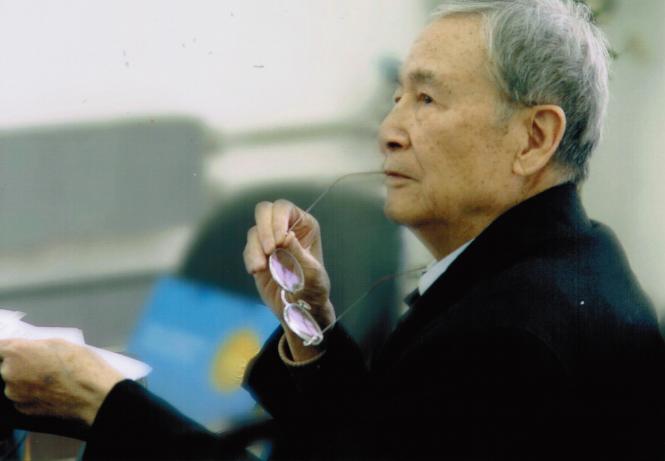
Figure 6: Ye Duzheng, (2013) Institute of Atmospheric Physics, Chinese Academy of Sciences (中国科学院大气物理研究所) http://www.iap.cas.cn/qt/zthd/dnydz/yrxm/201310/t20131018_3958920.html.
Reaching out to policy makers, Ye Duzheng and 8 academicians jointly signed a letter to the CCP Central Committee in June 2005 proposing the establishment of a “National Special Advisory Group on Climate Change Science”. This suggestion received a positive response. Subsequently, on January 12, 2007, 12 experts were appointed to the first national climate change expert committee (中国国家气候变化专家委员会), which has since become a central think tank for China’s climate policy.
Conclusion
This short paper has illustrated how perspectives on climate evolved in China, from the earliest concern with events in nature that influenced the Chinese people’s lives, up to the early twenty-first century, when advanced research on the climate system by Chinese scientists and international scientific networks offered the Chinese government some highly professional policy advice.
Through the careers of Zhu Kezhen, Tu Changwang, and Ye Duzheng it is possible to see how the knowledge base of climate research expanded from historical records and geography to advanced mathematical models and theories in atmospheric physics during the twentieth century. The three pioneers were all exposed to international research through studying overseas, and they all strongly engaged with training climate scientists—in a sense, they were building a community of scholars that would be able to pass on the knowledge of climatic processes and changes to the Chinese people as well as the government.
As the Chinese scientific research on climate became increasingly internationalized and concerned with global climate change, the Chinese political leadership's concerns evolved from an initial interest in improving weather forecasts, to furthering their understanding of physical forces of climate change, and finally recognizing human impacts on climate and the need to participate in international research and political negotiations. In the twenty-first century, the advice offered by the Chinese climate science community has increasingly become vital for policy making, and Chinese scientists contribute significantly to international research in the field.
What is the role of this scientific community today? How are new scientific fields—beyond geography, meteorology, and atmospheric physics—becoming integrated in climate research and policy advice? And to what extent do climate scientists diverge and agree in their findings and beliefs? On the basis of individual scientists’ biographies and with the help of scientometrics and network research, exploring such questions can help us understand the evolution and influence of Chinese climate science.
